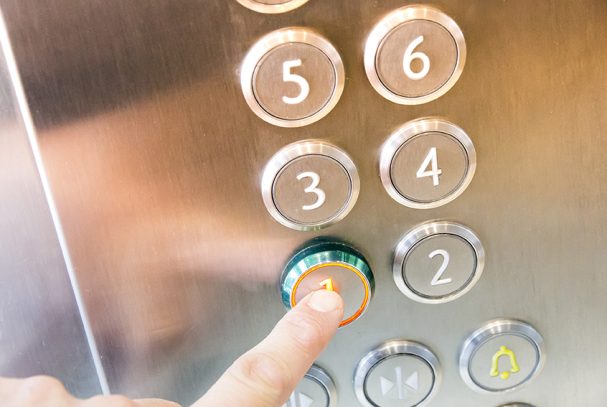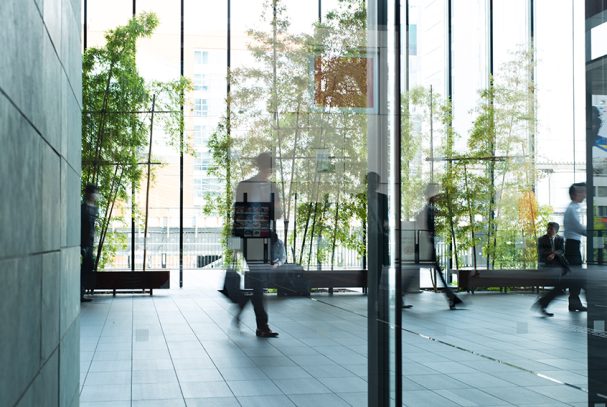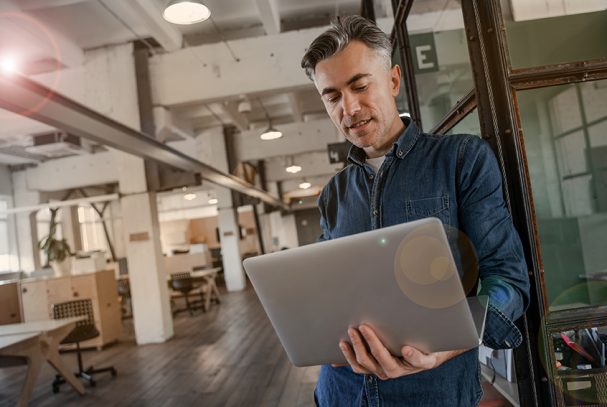Imagine arriving at your workplace. The first thing you do is look at your mobile phone, and an app shows you to a free parking space. When you get to the lift, the lift remembers which floor your work on.
Then you look at your phone to find out which desk is free. You are happy to see that the building’s smart technology did not forget that it is summer holiday season and a lot of the personnel are away, so the temperature and other conditions have been automatically set in accordance with the number of people in the building. If, however, you want to change something, such as the lighting, you can do this using your phone.
Tangible features such as these can be incorporated into smart office buildings, according to Teemu Hausen, Director of Granlund’s Digital Property Services business area, and Jukka Karhu, Director of Granlund’s Building Automation department. Hospitals are a whole different ball game – smart technology can enable the management of hospital premises and the movements of large numbers of people. The use of the building can be optimised so that people are in the right places at the right times. ”It is easier to measure the benefits in a health care setting. Everything that reduces costs or, in other words, speeds up the process of treating people so they become health again, can pay for itself quickly,” Karhu says.
Although smart buildings are usually designed around people and making the conditions inside the building more pleasant for people, the digitalisation of buildings can also provide financial and ecological benefits in the form of energy savings.
The majority of the buildings constructed in Finland are not yet making the most of smart technology.
A path through the app jungle
According to Karhu and Hausen, now is the time for builders to take the bull by the horns and start exploiting the multitude of opportunities that digitalisation can offer the construction sector – and opportunities are in good supply.
In practice, there are all manner of providers offering various digital solutions knocking on the door, but the majority of the buildings constructed in Finland are not yet making the most of smart technology. One of the problems is that the benefits of smart technology are enjoyed by the building’s occupants but the building investor has to foot the bill – normally, the investor is not the occupant. Sometimes, the building’s end users are not even known during the construction phase.
”Smart technology can nevertheless benefit property developers. For example, they may be able to charge the occupants slightly more in rent,” Teemu Hausen says.
Planning is instrumental in ensuring that the right type of smart technology is selected and used.
”One of the problems is that property developers can find it difficult to gain an overview of the various applications. It is our role to work as an intermediary, help and clarify things for the customer,” Hausen says.
Robust entity management
When there is a lot of technology in a building, what happens if there is a power cut and everything stops working? And is there so much technology that occupants will have to learn to use dozens of different apps that cannot communicate with each other?
According to Hausen and Karhu, these are challenges that highlight the elevated importance of planning. Proper advance preparations must be made for unanticipated situations, and precise agreements must be made concerning who is responsible for maintaining each part of every app and for monitoring the overall entity.
At the moment, property maintenance companies mow the lawns and adjust the air vents, but people with different skill sets will be required to look after new smart technology.
Karhu is confident, because smart buildings are about ICT.
”Even today, there are sometimes problems concerning the division of responsibilities for maintenance. I think that incorporating smart technology will improve the situation because established procedures already exist for maintaining ICT systems.”
Anyway, analytics and artificial intelligence could already forecast when a building will require maintenance, even before the occupants are able to detect any problems.”
”It is also possible that, in the future, we will be able to measure the well-being of building occupants using devices such as fitness trackers. Data could be sent directly to the building’s control systems and the conditions could be adjusted accordingly. This is just a vision, but it is also an interesting topic for research,” Karhu says.
Granlund is actively involved in the Nordic Smart Building Convention, which will be held on 6 and 7 June in Helsinki.




